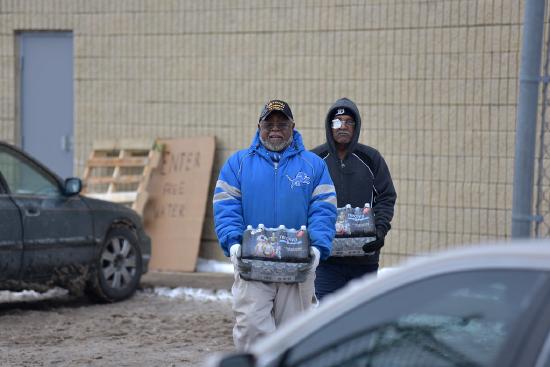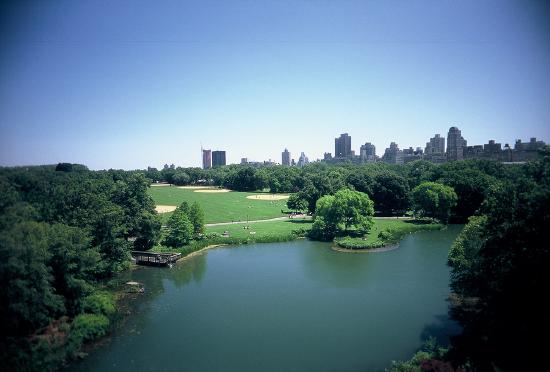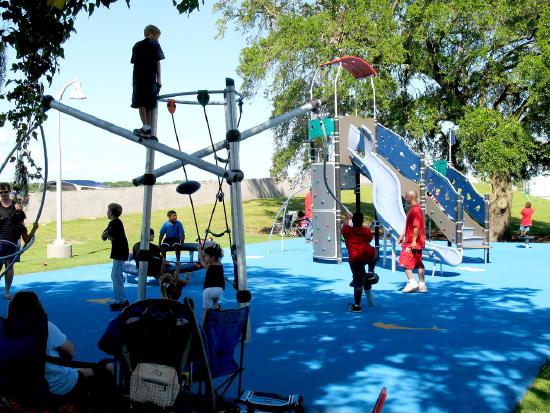4.2: Neighborhoods
- Page ID
- 128666
Neighborhoods
When asked, over 50% of people describe their living situation as in the suburbs, according to the US Census Bureau. The suburbs was originally a subset up of urban areas, but has become where the majority of families live. The suburbs are generally where housing communities are set up and is typically more dense than rural areas, but less dense than urban areas. Urban areas are cities with a higher population and is a mixture of housing and business. In 2017, Pew Research studied the changing demographics of where more of the population is residing. What they found is that rural communities are shrinking and suburban areas are increasing. They also found that they are changing ethnically as well, with the majority of urban dwellers being non-Hispanic
According to the Census Bureau, 11.6 million children 16% of all kids nationwide were living in poverty in 2020. The data also reveal that poverty rates remain disproportionately high for children of color. Nationwide, Black (28%), American Indian (25%) and Latino (23%) children are more likely to grow up poor when compared to their non-Hispanic white (10%) and Asian and Pacific Islander (9%) peers.
High-poverty urban settings has increased in the United States and the the amount of poor urban families living in high-poverty neighborhoods has increased exponentially.
Additional Theories
Stress theory looks at how air and land pollution in neighborhoods can cause stress on families and children. Exposure to lead, smog, bad water and high levels of toxins are all environmental stressors and can play a part in environmental racism. Let's look at the Flint water crisis. As of the writing of this book, the water in Flint Michigan is still undrinkable and the majority of the city residents are standing in long lines to get their weekly ration of bottled water. In 2014 the water was contaminated with lead and while some inroads have been made to clean up the mess, it is still a crisis. The Michigan Civil Rights Commission set out to determine if this was an environmental justice issue and this is what they said, "The Commission believes that we have answered our initial question, “was race a factor in the Flint Water Crisis?” Our answer is an unreserved and undeniable -- “yes.” We do not base our finding on any particular event. It is based on a plethora of events and policies that so racialized the structure of public policy that it systemically produced racially disparate outcomes adversely affecting a community primarily made up of people of color."

Figure 4.2.1:"Flint Water Response Team" by Michigan Emergency Management & Homeland Security is licensed under CC BY-ND 2.0
Neighborhoods can be places where families can gather together and commune. Some neighborhoods have strong community bonds and you can see that in the activities offered, in their resources and how they gather. In Social Organizational Theory, social integration and participation is key to having better outcomes for children. Like the African proverb, "it takes a village to raise a child" in Social Organizational Theory, neighborhoods with similar values will raise the alarm and monitor for dangers to children. Contact among families may lead them to share ways of dealing with behavior problems with their own children, getting advice, encouraging children's skills, connecting to community resources and organizing neighborhood activities (Klebanov et al., 1997). This can happen in rural, suburban as well as urban neighborhoods. In this theory, it is the people coming together to make the change for children.
In Institutional models, the importance of neighborhood wellness is placed on the resources; parks, libraries, children's programs and activities. The more affluent areas, the richer the experiences offered. And of course, the safer the neighborhoods, or the perceived level of safety, the more willingness parents are to take advantage of these resources. This is of critical importance as children get older and are adolescents; but can also play a big role in early childhood as well. Interactions between children and preschools, religious communities, child care, libraries, health care systems, public transportation, and other playmates have an impact on children and children's development as well.
This video (5:48) shows the Bioecological Model by Urie Bronfenbrenner. Pay attention to how the environment and the opportunities around a child can help or hinder a child.
How were the physical resources in your neighborhood growing up? Were you able to play in the parks and walk around your neighborhoods while feeling safe?
Parks and Recreation
Green space and parks are sometimes hard to find, unsafe and difficult to access. In rural areas, they can be far and without transportation, near impossible to access. In urban and suburban areas, they may be unsafe or not well maintained. We also have some of the most beautiful and adventurous parks. One of our most famous parks was established in 1853. Central Park in New York City is 843 acres of land preserved for the purpose of recreation and relief from urban conditions. Many other large cities followed New York's example and in the early 1900's the people put pressure on the government to create and maintain our city parks (Rivkin, 1995). This was because by this time, many cities had grown larger and there was less play space for children. In 1906, the Playground and Recreation Association of America was created, which now goes by the name; The National Recreation Association.


Figure 4.2.4: "Riverfront Park" by North Charleston is licensed under CC BY 2.0
Adventure Playgrounds are spaces that are open, with real materials such as tools, paint, wood, metal, recyclables and anything else that sparks the imagination of the children that use them to create and play with. There is no direct adult direction, only support. There can be a lot of risk taking as well in some of these playgrounds. There are currently only a handful of these playgrounds in the United States.
Look on the Internet where the nearest Adventure Playground is to you. What is different about it than other parks?
References:
Klebanov, P.K.,J. Brooks-Gunn, and G.J.Duncan 1994 Does neighborhood and family poverty affect mothers' parenting, mental health, and social support? Journal of Marriage, and the Family 56(2):441-455
Rivkin, M.S. (1995). The great outdoors: Restoring children's right to play outside. Washington, DC: National Association for the Education of Young Children

